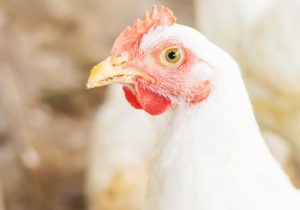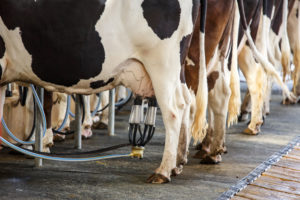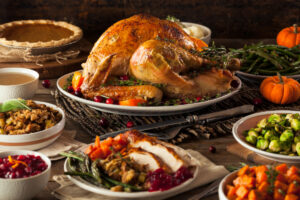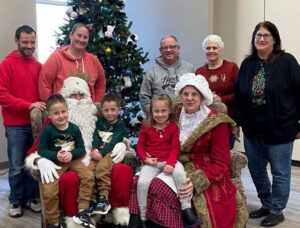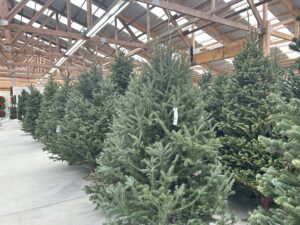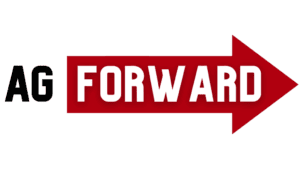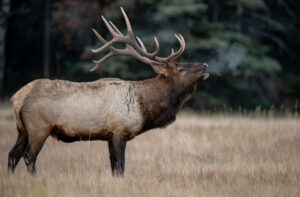Wisconsin 4-H Thanks Top Donors
Today, the Wisconsin 4-H Foundation is recognizing its generous donors.
Since 1914, Wisconsin 4-H has helped young people develop the skills they need to meet the demands of our complex and changing world. It has a rich history of agricultural clubs that helped connect families to research-based advancements in farming technology and techniques. Today’s 4-H has expanded to include science, leadership, healthy living and communications programming.
The support of Wisconsin 4-H’s generous partners provides essential funding for 4-H programs throughout the state.
“These organizations help Wisconsin 4‑H create cutting-edge, relevant programs for young people to learn real-world skills that will prepare them for the challenges of today and tomorrow, moving communities, the state, our country and the world forward in ways no other youth organization can,” says Brenda Scheider, executive director of the Wisconsin 4-H Foundation. “We value our partners who help Wisconsin 4-H make a positive impact on our youth. We couldn’t do it without them. Thank you.”
Emerald Clover ($25K+)
Compeer Financial
JOANN
Tractor Supply Company
Platinum Clover ($10K-$24,999)
AgCountry Farm Credit Services
ALCIVIA Cooperative
Andis Foundation
Cedar Crest Ice Cream
Crave Brothers Farm
Egg Innovations
GreenStone Farm Credit Services
UW Provision Company
Silver Clover ($5K-$7,499)
CHS, Inc.
Gibbsville Implement
Land o’ Lakes Foundation
Merwin Farms
Wisconsin Beef Council
Wisconsin Farm Bureau
Wisconsin Souvenir Milkcaps
Bronze Clover ($2,500-$4,999)
Daluge Travel
Hartmann Sand & Gravel
Hull Farm of Lake Geneva/Jones Family Farm
Sartori Company
Saz’s Hospitality Group
Randy Schopen Memorial Foundation
Patrick & Janet Thompson Family Foundation
Wisconsin Association of Meat Processors
Green Clover ($1K-$2,499)
Cornerstone Foundation of Northeastern Wisconsin
Crane Farms
Cropp Cooperative
Gerner Farms
William S. Knight Foundation
Major Goolsby’s
Manna Pro
Edward J. Okray Foundation
Sunnyside Hatchery
Ultimate Confections
Wisconsin Farmers Union
4-H is one of the largest and oldest statewide youth organizations in Wisconsin. Nearly 150,000 youth participate in the Wisconsin 4-H program each year, and more than 22,000 volunteers support the program.
Commercial Flock Contracts Avian Flu
The Department of Agriculture, Trade and Consumer Protection has identified a case of highly pathogenic avian influenza in a commercial flock in Trempealeau County.
DATCP and the U.S. Department of Agriculture are working closely with animal health officials on a joint incident response. The affected premises will not move poultry products. The farm will depopulate its birds to prevent the spread of the disease.
Birds from the flock will not enter the food system. According to the U.S. Centers for Disease Control and Prevention, HPAI does not present an immediate public health concern. Avian influenza also does not pose a food safety risk; properly handling and cooking poultry and eggs to an internal temperature of 165˚F kills the virus.
Over the past weeks, many states have announced new cases of HPAI in domestic flocks. This fall and winter could be a critical time for virus transmission, so DATCP urges all poultry owners to implement strong biosecurity measures to protect their birds from the disease.
HPAI viruses are highly contagious and often fatal to domestic poultry. Avian influenza can be spread by contact with infected birds, commingling with wild birds or their droppings, equipment, or clothing worn by anyone working with the animals.
Signs of HPAI include:
- Sudden death without clinical signs
- Lack of energy or appetite
- Decrease in egg production; soft, misshapen eggs
- Purple discoloration of wattles, comb, and legs
- Difficulty breathing
- Runny nose, coughing, sneezing
- Stumbling or falling down
- Diarrhea
DATCP reminds Wisconsin poultry owners to register their premises. State law requires that all livestock owners register where their animals are kept. Registration helps animal health officials communicate with flock owners during disease outbreaks.
To report increased mortality or signs of illness among domestic birds, contact DATCP at (608) 224-4872 (business hours) or (800) 943-0003 (after hours and weekends).
Milk Production Up Slightly
Milk production in Wisconsin during October 2023 totaled 2.69 billion pounds, up slightly from the previous October, according to the latest milk Production report from USDA.
Production in the 24 major States during October totaled 17.9 billion pounds. This is down slightly from October 2022. September revised production, at 17.5 billion pounds, was up 0.1 percent from September 2022. The September revision represented an increase of 17 million pounds or less than 0.1 percent from last month’s preliminary production estimate.
The average number of milk cows in Wisconsin during October, at 1.27 million head, was unchanged from last month but down 1,000 from October 2022. The number of milk cows on farms in the 24 major States was 8.91 million head, 19,000 head less than October 2022, and 5,000 head less than September 2023.
Monthly production per cow in Wisconsin averaged 2,120 pounds, up 20 pounds from last October. Production per cow in the 24 major States averaged 2,013 pounds for October, 3 pounds below October 2022.
The annual production of milk for the U.S. during October totaled 18.7 billion pounds, down 0.5 percent from October 2022. Production per cow in the United States averaged 1,997 pounds for October, 1 pound below October 2022.
The number of milk cows on farms in the United States was 9.37 million head, 42,000 head less than October 2022, and 6,000 head less than September 2022.
Romanski Reflects on Holiday Traditions
The following is a commentary by Department of Agriculture, Trade and Consumer Protection Secretary Randy Romanski.
The holiday season is almost upon us. With it comes many traditions; special holiday meals shared with loved ones, gathering together for festive parties and celebrations, reflecting on the things we are grateful for, and setting goals for the year ahead. Many of the traditions that we enjoy this time of year, however, would not be possible without our state’s many agricultural producers and processors.
For some, it’s not Thanksgiving without a plump, juicy turkey on the dinner table. For others, it doesn’t feel like the holidays without a goose, duck, ham, brisket, or prime rib roast. We have Wisconsin’s meat industry to thank for that. Producers and processors work hard year-round, including during the holidays, to meet consumer demand and help ensure our festivities will be full of safe and delicious Wisconsin-made meat products.
Wisconsin’s agriculture producers and processors contribute many other commodities to our fall and winter celebrations, too. After all, no holiday table is complete without Wisconsin-grown potatoes, green beans, and corn, or a generous helping of cranberries. Many of these we are the number one producer in the nation. Consumers can also rely on them to provide the necessary ingredients they need to do their holiday cooking and baking. Many of the seasonal favorites we enjoy are produced by your neighbors right here in Wisconsin.
But it isn’t only food that our state’s producers supply for our holiday celebrations. Each year, almost two million Christmas trees are harvested from over 800 tree farms in Wisconsin. This contributes $50 million in sales to the state’s economy. Some of these trees are shipped out-of-state while others remain here for Wisconsinites to purchase and enjoy. Every fall, staff from DATCP’s Bureau of Plant Industry inspect these trees, helping ensure that, when a consumer buys a Wisconsin-grown Christmas tree, it is high-quality, and pest- and disease-free.
It’s clear that Wisconsin agriculture gives us much to be thankful for. However you choose to celebrate the season, I hope you will include Wisconsin-grown and produced products as part of your gatherings and traditions. Happy holidays!
Soybean Harvest Nearing Completion
Warm and windy conditions across most of the state dried both fields and crops. This allowed for an increase in harvest and tillage activities.
USDA reporters say the corn for grain harvest is now 78% finished, which is about a day ahead of the five-year average. Corn moisture levels this past week averaged 20%.
Wisconsin’s soybeans are now 94% harvested, with most of southern Wisconsin finished and still some combines rolling in the northern half of the state.
Ninety-four percent of the winter wheat has emerged, with 65% of the new crop reported to be in good to excellent condition. That’s down 3% from last week.
Fall tillage is 63% finished, or about two days behind average.
Santa and His Reindeer Visiting Farm Wisconsin
On Saturday, December 2, the North Pole moves a little closer to home. Farm Wisconsin Discovery Center will transform in to the home of Mr. and Mrs. Claus for their Breakfast at the North Pole event. Activities will run from 9 a.m. – Noon.
The event combines two popular events of recent years – Milk and Cookies with Santa and Breakfast with Santa.
“We are thrilled to once again partner with the Manitowoc County Dairy Promotions Committee to host this special event,” shares Abigail Winkel, Farm Wisconsin brand manager.
Headlining the event are two of Santa’s reindeer, live on site. Guests can meet the reindeer, take potential Christmas card photos, and ask the attending elves questions about the four-legged visitors. Also joining the morning will be Santa and Mrs. Claus.
Enjoy a free carton of milk and fresh baked cookie throughout the morning. This is courtesy of the dairy farm families of Manitowoc County and the Manitowoc County Dairy Promotions Committee. Their team will also host an interactive activity featuring dairy products and the holiday season.
All Breakfast at the North Pole tickets include admission to the discovery center. The discovery center admission portion of all youth tickets (ages 3-12) has been waived. This is courtesy of the Manitowoc County Dairy Promotions Committee. Admission to the discovery center is factored in to the adult ticket price.
Tickets for the Breakfast at the North Pole event – Ages 0-2: Free, Ages 3 – 12: $14, and Ages 13+: $29 – and are on sale now at farmwisconsin.org.
Christmas Tree Crop Ready For Busiest Weekend
As you drive up the lane toward Hann’s Christmas Farm in Oregon, Wisconsin, you can’t help but smile. The barns and outbuildings resemble Santa’s workshop donned in evergreen beaus and red ribbons. The fragrance of pine fills the air. And the staff is hard at work fashioning wreaths and wrapping trees, mirroring a scene from the North Pole.
Greg Hann is the second generation on his family’s Christmas tree farm, a 50-acre operation growing about 70,000 trees accounting for five different species. He’s also an active member of the Wisconsin Christmas Tree Producers Association. He speaks for Wisconsin growers in that the busiest weekend for Christmas tree growers are the days following Thanksgiving.
Hann says the pandemic really drove people back to the farm to get real Christmas trees because it was an activity that the family could do together outside.
“We are seeing a huge uptick still,” he says. “It’s nice to see that people are interested in our crop. We really enjoyed that people understand the benefit to growing a Christmas tree in Wisconsin; the benefit of the natural habitat that it gives us.”
The farm opens Nov. 1, one of the first to open in the state. Hann says this is because people are looking to decorate earlier and earlier every year. He says it’s becoming more common for folks to put the tree up earlier and take it down on Dec. 26. In the past, families would keep the Christmas tree up through the Epiphany, a Christian holiday on Jan. 6.
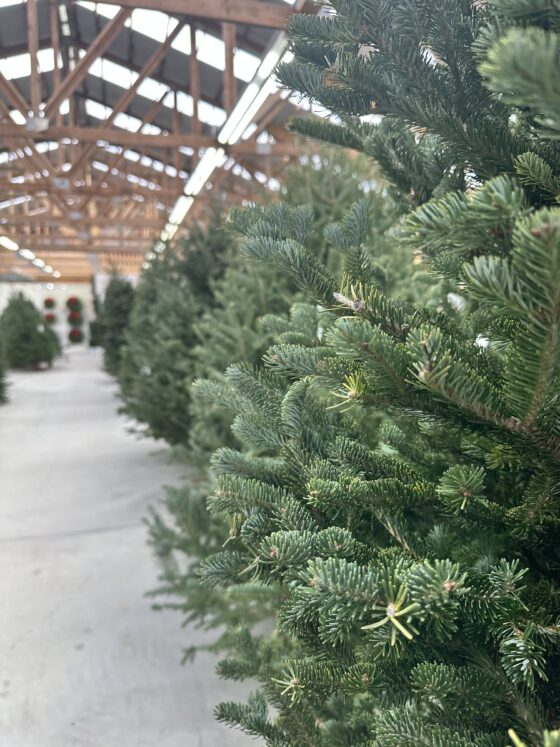

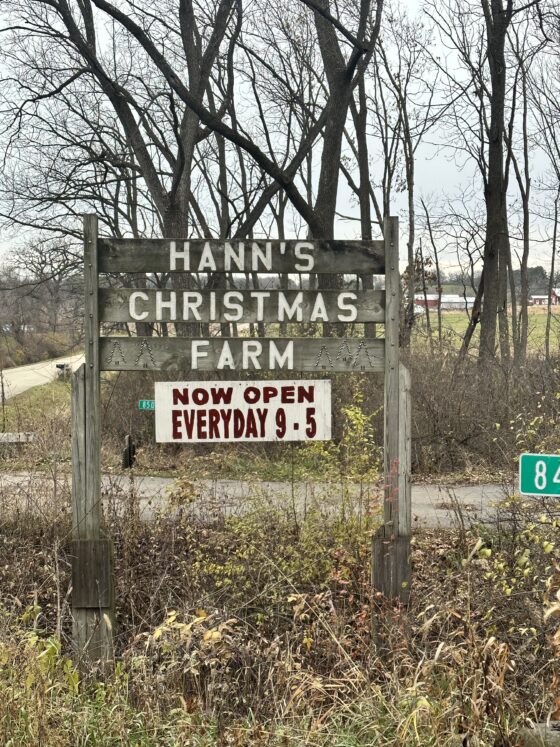
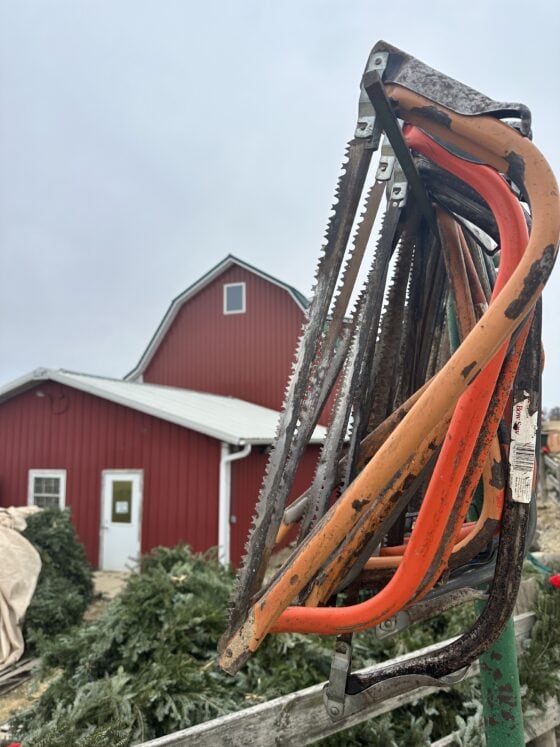


A Christmas tree can last about six to seven weeks. Hann says there are tree preservatives on the market that folks can use, such as a tablet that gets added to the water. But a pro-top is to make sure you have a fresh cut on the tree.
“If you cut it yourself or if you even go to a lot or different farms, make sure you cut that inch, inch and a half off of the stump of the tree so that the water will uptake a little better,” Hann says. “Always do a fresh cut within an hour, hour and a half of putting it into water in your home.”
This year’s drought was a problem for the one-year-old and two-year-old trees, but mature trees were able to handle the low moisture. The drink of water in late September really helped reduce stress in the tree ahead of harvest. Growers noticed that the trees did not grow wide with the lack of moisture, but the trees did get more dense foliage, which Hann says customers will appreciate.
Above: If this is your first year getting a real Christmas tree, it doesn’t have to be an intimidating process. The experts are helpful! Brooke has worked at Hann’s Christmas Farm for eight seasons. After you pick out a tree or cut one down yourself, staff will shake off any old needles with this handy device! Brooke shows us how it’s done.
Above: After the tree gets a shake, it gets wrapped up for the drive home. Brooke and the rest of the staff help you tie it to the roof of your car. Just don’t forget it’s up there! Greg Hann says some people accidentally pull into their garage with the tree on the car. Oops!
5 Appointed to Farm Bureau’s YFA Committee
Heather Erdman of Eau Claire County, Victoria Smith of Marquette County, Luke and Ashley Lisowe of Calumet County and Jason Behrend of Wood County have been appointed to Wisconsin Farm Bureau’s Young Farmer and Agriculturist Committee. Their terms begin at the end of the Wisconsin Farm Bureau YFA Conference on December 4.
“It is exciting to see these young members step up and assume leadership roles in our organization,” WFBF President Kevin Krentz said. “The YFA program is designed to build the next generation of Farm Bureau leaders and these appointees will surely rise to the occasion.”
Heather Erdman

Heather Erdman raises kids, crops and cattle with her husband, Steven, on their family farm. Their four children are the fifth generation raised on their farm. As a family, they show cattle at local and also national shows. Heather currently serves as the Eau Claire County YFA Chair. She is also an active member of the Augusta FFA Alumni Association and Friends of the Fair.
Victoria Smith

Victoria Smith grew up immersed in agriculture and the Farm Bureau family. Being a third-generation member, she prides herself in being part of this grassroots organization and teaching others about the importance of agriculture. Victoria currently works with children in rural communities through the Head Start program. She also works at her local library where she helps teach the community about opportunities in farming.
Jason Behrend
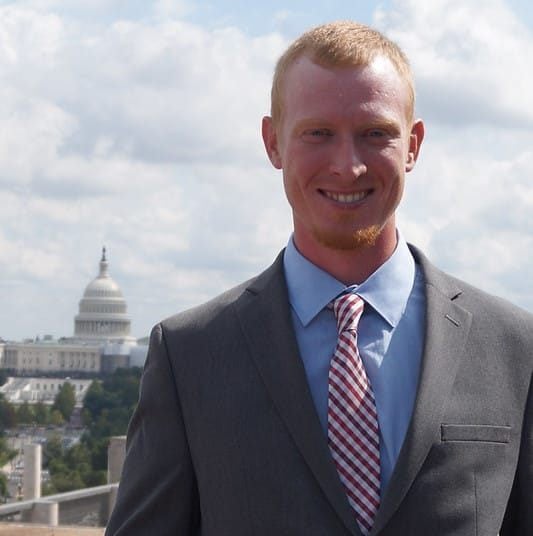
Jason Behrend is a fourth-generation farmer. He raises hogs and rotationally grazes cattle. He enjoys learning new soil-building farming practices and has been an active member of Farm Bureau for more than ten years. Jason currently serves as the Wood County Farm Bureau YFA Chair.
Luke and Ashley Lisowe

Luke and Ashley Lisowe were reappointed to the committee for 2024. They both grew up on their parents’ family dairy farms. Ashley graduated with a degree in dairy science from UW-River Falls. Luke graduated from UW-Madison’s Farm & Industry Short Course. Luke is part owner of his family’s dairy farm. Ashley works alongside Luke on his family’s farm while taking care of their children.
UW–Madison Offers New FISC Ag Forward
FISC Ag Forward, a new short course offered by University of Wisconsin–Madison’s Farm and Industry Short Course program, will be offered Jan. 16-19 on the UW–Madison campus. Participants can sign up for the full four-day short course, or for individual days.
The short course provides training in advanced dairy production and management topics. Training sessions will be led by faculty members in the UW–Madison College of Agricultural and Life Sciences (CALS).
Schedule
- Tuesday, Jan. 16: “Ag Economics” with Paul Mitchell, Department of Agricultural and Applied Economics
- Wednesday, Jan. 17: “Dairy Diet and Nutrition” with Luiz Ferraretto, Department of Animal and Dairy Sciences; and Marta Moura Kohmann, Department of Plant and Agroecosystem Sciences
- Thursday, Jan. 18: “Reproduction, Genetics and Genomics” with Paul Fricke, Department of Animal and Dairy Sciences; and Kent Weigel, Department of Animal and Dairy Sciences
- Friday, Jan. 19: “Animal Welfare” with Jennifer Van Os, Department of Animal and Dairy Sciences
Each training session lasts 2.5 hours. The homebase for the short course is UW–Madison’s new Center for Dairy Research facility.
FISC Ag Forward is open to farmers, farm managers, ag professionals – and anyone interested. It will take place during winter break. Students in the UWRF residential FISC program as well as other interested university and tech college students are able to participate.
“We’re proud of our FISC Ag Forward program and excited to offer it. It was designed to be complementary to residential FISC at UW-River Falls, and is a great example of our goal to partner – and not compete – with fellow ag colleges and other institutions,” says Heather Gayton, outreach program manager in the CALS Office of Extension and Outreach.
For more details about FISC Ag Forward, including information about registration, fees and lodging, visit: go.wisc.edu/agforward.
Successful 2023 Elk Hunting Season
The Wisconsin Department of Natural Resources (DNR) is celebrating a successful elk hunting season. The state’s sixth elk hunting season opened Saturday, Oct. 14 and closed Sunday, Nov. 1. All four state licensed hunters filled their harvest authorizations.
The four hunters who participated in this year’s hunt were selected at random from a pool of 21,312 applicants. One hunter successfully harvested a bull elk in the first weekend of the season. The second was harvested during the first week. The third elk was harvested at the end of October, about two weeks before the end of the first open period. The final harvest occurred on the last day of the first hunting period.
“It’s exciting that we have the opportunity in Wisconsin to pursue elk in our home state,” said Josh Spiegel, DNR Wildlife Biologist. “Every hunter’s experience is unique each year, and this year’s hunters definitely lived up to that standard.”
Elk Status And Management
Wisconsin’s annual elk hunt takes place in the Clam Lake Elk Range, home of Wisconsin’s longest tenured elk population since reintroduction (1995). The DNR also supplementally released elk in the Clam Lake region in 2017 and 2019. In 2023, the estimated population of the Clam Lake elk herd is 355 elk. Bulls have been harvested across this range each year since the hunt started in 2018.
Elk were also reintroduced in Jackson County in 2015 and 2016 to form the Black River Falls herd. The Black River Falls herd is estimated at 160 individuals in 2023, bringing the statewide total to approximately 515 elk. This year’s statewide estimate is a 10% increase from the prior year.
The 2024 elk hunt application period for Wisconsin residents is expected to open March 1 and run through May 31, 2024. For more information on elk in Wisconsin, visit the DNR’s Elk webpage.


